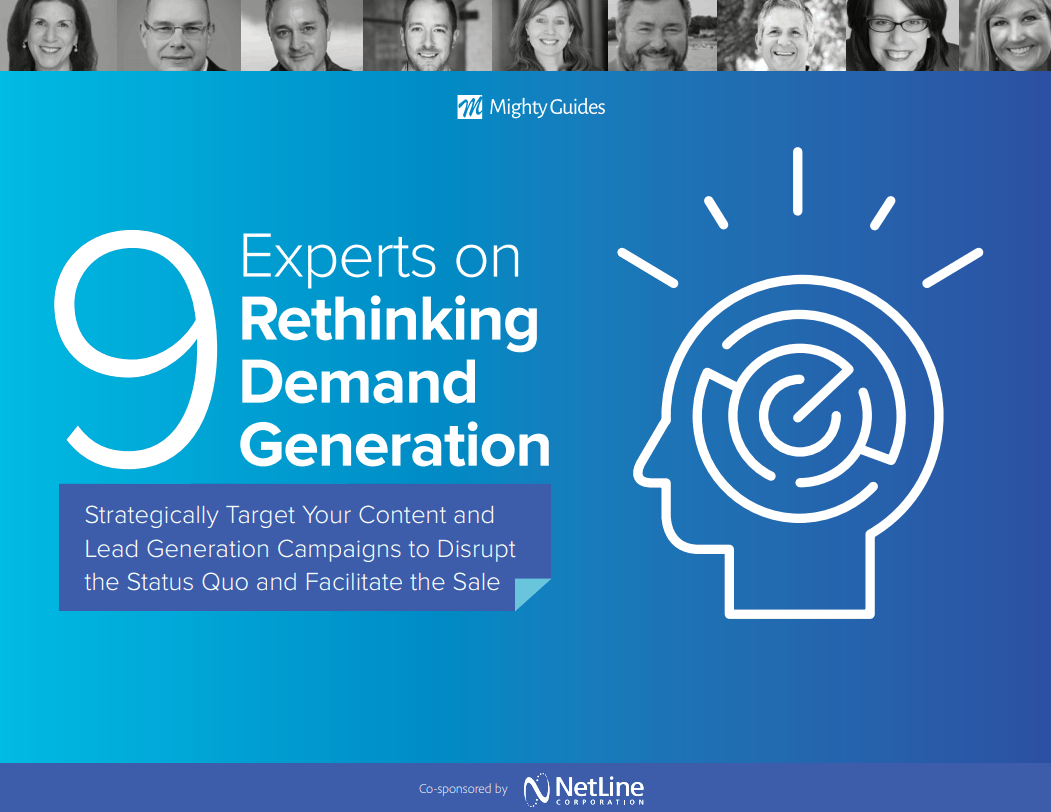
Brent Adamson, Principal Executive Advisor, CEB (now Gartner)
Find and Qualify Mobilizer Leads
- No simple formula scales easily to include additional filtering to qualify the leads that traditional methods based on job titles and roles generate.
- Knowing where Mobilizers go to learn about things helps you determine whether your demand generation content is the source of that learning.
“Just because someone has ‘VP’ in his or her title doesn’t mean that that person is more or less open to change. Job title has nothing to do with it”
To succeed in a world where buying decisions are made by consensus, you must get decision makers simultaneously to embrace the idea that what they’re doing right now is not good enough—that they must change what they are doing. As Brent Adamson points out, however, “Just because someone has ‘VP’ in his or her title doesn’t mean that that person is more or less open to change. Job title has nothing to do with it.” Adamson says that the people you really want to connect with and build conversations and relationships with are the people who are open to change, the people willing and able to drive a consensus on change across their organization.
“The problem is that the lead-generation and acquisition process doesn’t rest on an infrastructure of change,” says Adamson. “Rather, it’s based on title and role.” With systems built around job titles and roles, how do you find, what CEB (now Gartner) calls, true Mobilizers? The search requires a different approach to lead qualification. No simple formula scales easily to include additional filtering to qualify the leads that traditional methods generate, but some companies are taking innovative approaches.
For example, Adamson works with one company that offers a successful collaboration product. That company found that when it sells its collaboration tools in a business-tobusiness setting, certain people, regardless of title, role, or level, get excited about the idea and value of collaboration across the organization. “When this company’s salespeople find one of those individuals, whom they call collaboration champions, the likelihood and the ease of a sale go up dramatically,” says Adamson.
To learn more about collaboration champions, the company’s leaders tried an experiment. They invited five or six people whom they considered the best examples of collaboration champions to the company’s headquarters. These people were totally unlike each other—they had different roles and titles, they came from different industries—but they had their willingness to collaborate in common. By putting these people in the same room together, this company was able to generate essential questions that, depending on how people answered, would be good indicators of whether a person were a collaboration champion or not.
The criteria the company used to identify such Mobilizers differed by market, but Adamson believes that companies can use this same approach to learn a lot about those people who could be their most valuable leads, such as what they’re looking for and how they find it. They can determine common characteristics about these leads, such as how they find information and the most important part of their decision making process. They can find out where these Mobilizers go to learn about things and determine whether the company’s demand generation content is the source of that learning. “It’s extra work,” Adamson says. “You need to ask yourself, ‘What is that person looking for? Which criteria most accurately predict whether someone’s open to change?’ Then, you must work back to the story most likely to get that person to embrace the change you’re offering.”



